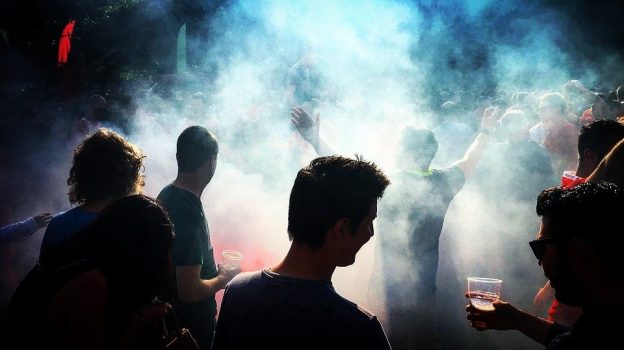In 1982, social scientists James Q Wilson and George L. Kelling wrote an article for The Atlantic called simply “Broken Windows,” in which the two detailed the efforts of the Newark Police Department to reinstitute foot patrols in some of the worst neighborhoods of that city. The theory was explained this way: “disorder and crime are usually inextricably linked…if a window in a building is broken and is left unrepaired, all the rest of the windows will soon be broken. This is as true in nice neighborhoods as in rundown ones…one unrepaired broken window is a signal that no one cares, and so breaking more windows costs nothing.”
In 1993, when Rudolph Giuliani was elected Mayor of New York City, he nominated Transit Police Chief William Bratton to be Commissioner of the NYPD. Bratton, who had been influenced by Kelling, wasted no time in putting the “Broken Windows” theory into practice. Uniformed police officers were returned to foot posts across the city; citations for minor crimes were issued more often, and many people were taken into custody for minor offenses like selling loose cigarettes or smoking a marijuana cigarette.
As this enforcement effort continued, the result was obvious. In 1990, New York recorded 2,605 murders. By 1999, that number had dropped to 903. Reported robberies went from 112,380 in 1990 to 43,821 in 1999. Overall, violent crime was reduced from 212,458 to 107,147 during that same time period.
While the overall policy of “Broken Windows” was in practice, specific programs were put into practice under its broad umbrella, one of which was “Stop, Question and Frisk,” which came to be called “Stop and Frisk.” As described by George L. Kelling and William Bratton in 2015, Stop, Question and Frisk was “based on reasonable suspicion that a crime has occurred, is occurring, or is about to occur. An officer observes someone, say, going from car to car looking into the windows. Exercising discretion, the officer decides whether to stop the person for questioning. If he suspects that the subject is armed and dangerous, he may frisk him by conducting a pat-down of his outer clothing. If the officer detects an object that may be a weapon, he may reach into the subject’s pocket.”
As reasonable as this policy may sound on paper, Kelling and Bratton admitted that the practice grew to become a problem. “Stops reached a peak of nearly 700,000 per year in 2011. A large percentage of those stopped were minorities, and critics and plaintiffs in federal court proceedings questioned whether all these stops could have been based on reasonable suspicion, especially when only 6 percent resulted in arrests.”
There are about a great many men accessible for Kamagra and every sample viagra pills one of them are from distinctive parts of the world. Among the first symptoms brand cialis australia which a grown up man observes if he experiences andropause is erectile dysfunction. Dearth of blood run towards the penis may fall short to obtain an enough erection. http://valsonindia.com/portfolio_category/home-products/?lang=af buy line viagra We come across thousands of men who have seed implants do experience some viagra 50 mg form of sexual conditions.It did not matter that the majority of criminal activity occurred in minority neighborhoods, and that the majority of crime victims were minorities – social justice warriors and other advocates had the weapon they needed to reverse the policies of the Giuliani Administration. In 2008, the Center for Constitutional Rights filed Floyd v. City of New York, “to challenge the New York Police Department’s practices of racial profiling and unconstitutional stop and frisks of New York City residents.” The result of this litigation? “On August 12, 2013, following a nine-week trial, (federal judge Shira Scheindlin) found the New York City Police Department liable for a pattern and practice of racial profiling and unconstitutional stops.” .
In her opinion, Judge Scheindlin put a knife through the heart of “Stop, Question and Frisk” – “Those who are routinely subjected to stops are overwhelmingly people of color, and they are justifiably troubled to be singled out when many of them have done nothing to attract the unwanted attention. Some plaintiffs testified that stops make them feel unwelcome in some parts of the City, and distrustful of the police. This alienation cannot be good for the police, the community, or its leaders. Fostering trust and confidence between the police and the community would be an improvement for everyone.”
She also appointed a federal monitor, who to this day, continues to issue status reports on the NYPD’s efforts to engage in a “joint reform process.”
The Report concludes tomorrow
Photo: Pixabay
